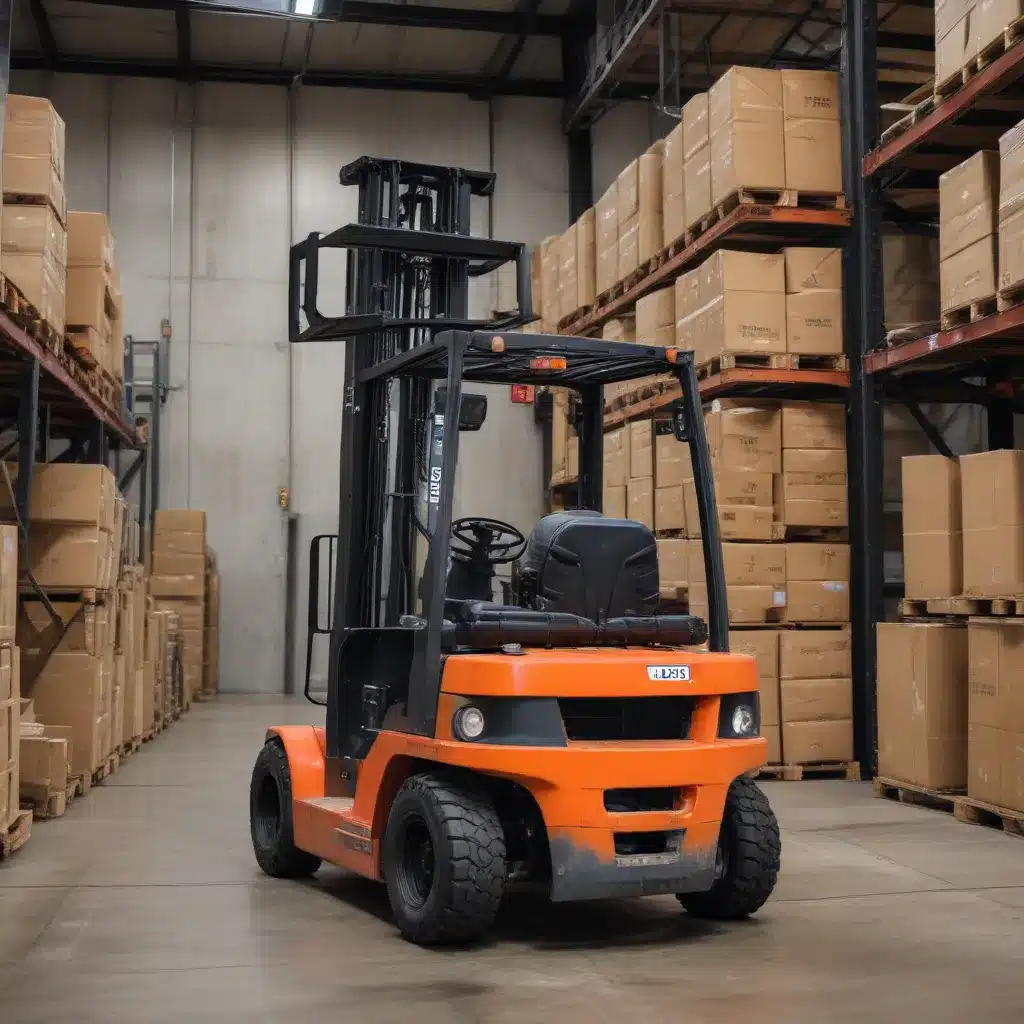
The Rise of Teleoperated Forklifts: Revolutionizing Logistics Operations
In the ever-evolving landscape of materials handling and logistics, a transformative technology is emerging – forklift teleoperation. As the industry grapples with pressing challenges, such as labor shortages, workplace safety concerns, and the need for enhanced operational efficiency, teleoperation is poised to become a game-changer.
Teleoperation, the ability to remotely control and operate a forklift, offers a compelling solution that promises to redefine the future of forklift operations. By leveraging advanced technologies, including real-time data transmission, sophisticated sensors, and intelligent control interfaces, teleoperated forklifts empower operators to navigate and manipulate these powerful machines from the safety and comfort of a remote location.
Enhancing Operator Safety in Hazardous Environments
One of the primary drivers behind the rise of forklift teleoperation is the need to enhance operator safety, especially in hazardous or inaccessible environments. Forklift-related accidents remain a significant concern in the materials handling industry, with an estimated 7,000 such incidents occurring each year in the United States alone. These accidents not only result in costly worker compensation claims, averaging $42,000 per incident, but also pose a serious threat to the well-being of forklift operators.
By removing the human operator from the physical forklift, teleoperation effectively eliminates their direct exposure to these hazardous conditions. Whether it’s navigating through tight spaces, maneuvering around obstacles, or operating in environments with elevated risks, such as chemical spills or extreme temperatures, teleoperated forklifts enable operators to safely and efficiently perform their tasks while minimizing the potential for injury.
Optimizing Logistics Workflows with Teleoperation
Beyond enhancing safety, forklift teleoperation also offers significant benefits in streamlining logistics operations and improving overall workflow efficiency. By enabling remote control of forklifts, organizations can unlock a host of advantages, including:
Reduced Downtime and Improved Responsiveness
With the ability to remotely control forklifts, operators can quickly intervene and address issues or unexpected situations, reducing downtime and improving overall responsiveness. This is particularly crucial in dynamic logistics environments where rapid decision-making and seamless operations are paramount.
Increased Operational Resilience
Teleoperation enables organizations to tap into a diverse talent pool, with operators located in different geographical regions. This allows for more flexible and resilient operations, as teams can be deployed and redeployed across multiple sites as needed, addressing labor shortages and mitigating the impact of disruptions.
Enhanced Productivity and Cost Savings
By eliminating the need for on-site forklift operators, teleoperation can lead to significant cost savings, ranging from reduced travel expenses to lower worker compensation claims. Additionally, the increased productivity and efficiency achieved through remote control can further enhance the bottom line.
Integrating Teleoperation with Autonomous Forklifts
As the forklift industry continues to evolve, the integration of teleoperation with autonomous forklift technologies is gaining momentum. This hybrid approach combines the benefits of both remote control and self-driving capabilities, creating a powerful synergy that amplifies the advantages of forklift teleoperation.
Autonomous forklifts, equipped with advanced sensors, artificial intelligence, and machine learning algorithms, can navigate and perform tasks with minimal human intervention. However, in complex or unpredictable situations, the integration of teleoperation allows human operators to seamlessly take control, providing the necessary oversight and making real-time adjustments to ensure optimal performance and safety.
This convergence of autonomous and teleoperated technologies not only enhances the overall reliability and responsiveness of forklift operations but also paves the way for more advanced, efficient, and adaptable materials handling solutions.
Navigating the Challenges of Forklift Teleoperation
While the benefits of forklift teleoperation are compelling, it is essential to address the challenges associated with this emerging technology. One of the primary concerns is ensuring low-latency communication, which is crucial for effective real-time control and responsiveness. Leveraging the latest advancements in connectivity, such as 5G networks and robust wireless infrastructure, can help mitigate this challenge and provide the necessary speed and reliability for seamless teleoperation.
Another key consideration is the human-machine interface (HMI) design, which plays a pivotal role in the success of teleoperation. Intuitive control interfaces, comprehensive visual feedback, and seamless integration with the operator’s workflow are essential for enabling precise and efficient control of the forklift remotely. Careful user research, iterative design, and rigorous testing are crucial in developing HMI solutions that enhance the operator’s situational awareness and decision-making capabilities.
The Future of Forklift Teleoperation: Embracing Innovation and Sustainability
As the forklift industry continues to evolve, the adoption of teleoperation is poised to accelerate, driven by its ability to address pressing challenges and unlock new opportunities. Beyond enhancing safety and optimizing logistics workflows, the integration of teleoperation with emerging technologies, such as artificial intelligence and advanced analytics, can further enhance the capabilities and sustainability of forklift operations.
For example, the integration of predictive maintenance algorithms can enable remote monitoring and proactive maintenance, reducing downtime and ensuring the continuous availability of teleoperated forklifts. Additionally, the combination of teleoperation and environmental sensors can enable the remote monitoring and optimization of energy consumption, contributing to more sustainable and eco-friendly materials handling practices.
Conclusion: Embracing the Future of Forklift Operations
As the forklift industry navigates the increasingly complex and dynamic landscape of materials handling, the adoption of teleoperation technology emerges as a transformative solution. By enhancing operator safety, optimizing logistics workflows, and driving innovation, forklift teleoperation promises to redefine the future of this crucial industry.
By embracing the power of teleoperation, organizations can not only improve the well-being of their workforce but also unlock new levels of operational efficiency, cost savings, and sustainability. As the industry continues to evolve, the integration of teleoperation with autonomous technologies and advanced analytics will undoubtedly pave the way for a more resilient, adaptable, and future-ready materials handling ecosystem.
Forklift teleoperation stands as a testament to the industry’s commitment to innovation and its unwavering dedication to enhancing safety, productivity, and sustainability. As the industry embraces this transformative technology, the future of forklift operations becomes brighter, more efficient, and safer for all.

